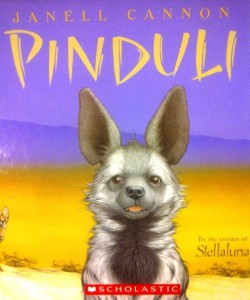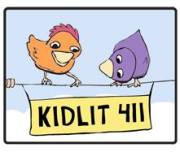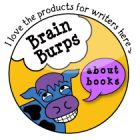14:14 PB ELEMENT Blog Review: THEME – Looking at Penduli by Janell Cannon
(My post #2 of the 14:14 Picture Book Blog Review Challenge conducted by Christie Wild of Write Wild, February 14-28, 2014.)
Title: Pinduli
Author: Janell Cannon
Illustrator: Janell Cannon
Publisher: Scholastic, Inc.
Year: 2004
Words: 1308
I joined the 14:14 PB Challenge late…like Friday night at 10:30 pm (CST). Had a family reunion Saturday out of town. Library was closed when I got home. Tonight, scrambling for another non-fiction picture book from my shelves, I realized in a panic that all I had were pre-2004. Until I found Janell Cannon’s Pinduli.
While I am personally foggy on how strictly qualifiers should be applied for a picture book in order for it to be tagged non-fiction, I feel like this book qualifies. First, there’s a full four additional pages, after the story, of hyena facts, as well as the advantages of being bald and striped and big-eared. (Sounds like a book for old guys like me.) Secondly, the ‘fictional’ tale relies on ‘factual’ elements throughout, facts that are critical to the story line.
But Pinduli is a young hyena with a problem. He and Mom are hungry, as she tells him not to wander far in the early African morning. Then he meets insults from cape dogs, old lions, and zebras. His attempts to assuage his declining self-esteem in the wake of these insults sort of ‘modifies’ his appearance, and the white dust of the dry earth, clinging to damp fur, with his lowered ears transforms him into a ghostly figure.
The unintentional fear his appearance causes among his tormentors causes them to conclude he is the Great Spirit, there to punish them for their cruelty to a young hyena earlier that morning. They repent, and their pursuit for forgiveness causes a revival on the savannah and solves the another problem for Penduli and his mother.
A delightful tale from the author of Stellaluna (1993) and Verdi (1997), the story of Pinduli (2004) rests on a solid theme line throughout that still has impact for kids ten years later, here in 2014.
When the young hyena is teased first about his stripes and ears by hyenas. “The pack erupted into wheezing laughter and galumphed away, tongues lolling.” A lion then describes her coat a ‘prickly fringe.” Then zebras at the watering hole are critical of her stripes, advising her to “take some of that unpleasant haziness out of your patterns.”
After each insult, Pinduli’s desperation mounts, and the experience brought back feelings of occasional teasing I suffered when I was a child.
Penduli makes attempts to ‘correct’ her image by lowering her ears, dunking in the pool, covering herself with dust. But her quick wit kicks into gear when her ghastly appearance scares the animals that teased her. When all eyes are on her, she decides to play along with their assumption. Her wise replies, which aim at the heart of the bullying she encountered, start a change of understanding.
She tells the frightened animals, “The Spirits want to know why you would commit such a hideous, awful, atrocious crime.”
As the animals confess their cruelty, hints emerge that they suffered similar insults. Pinduli commands them to return to those who wronged them, and through the resulting animal encounters it becomes clear that bullying begets bullying. The whole idea of unkindness stems back to earlier hurts and insults that can only be dealt with by forgiveness.
I think that the extension of the theme into the lives of the secondary characters gives strength to the story, and validates the theme for the reader as well.
I am encouraged to wonder about my own stories, and whether my themes run deep enough and wide enough to gain validity with the reader. For example:
- Does “curiosity driven exploration and resulting discovery” occur for only the main character, or are other secondary characters affected?
- Is my theme focused, and does it run as a continuous line throughout the story, beginning to end?
- Is the theme relative to the reader, even though couched in facts about nature, a fantasy story, or a conventional circumstanc?
I will be more aware of the depth and width of theme in my writing from now on.
And as to the question about Pinduli—fiction or non-fiction? If you’ve had the privilege to read it, what do you think? On what shelf does a book like this belong? Let me know your thoughts in your comments.









I am not sure there is enough fact to put this in the non fiction section. Bullying and teasing are something that too many people must learn to deal with and the character in this book will resonate with anyone who has been bullied. If it was filled with more facts about Hyenas it might be both fiction and fact but it is a creative piece anthropomorphising animals dealing with the theme of bullying though not in a therapeutic way.
Great story and fabulous theme and once again a terrific description and analysis by you but I would put this in the fiction section of the shelf. Thank you.
Ah, I missed this review the first time around. After reading your post with its very detailed description, I immediately placed a reserve for a copy at my library. It sounds great and I love the cover art! All the libraries in my county system, by the way, have the book shelved in the picture book section as opposed to the nonfiction section. Nice post!